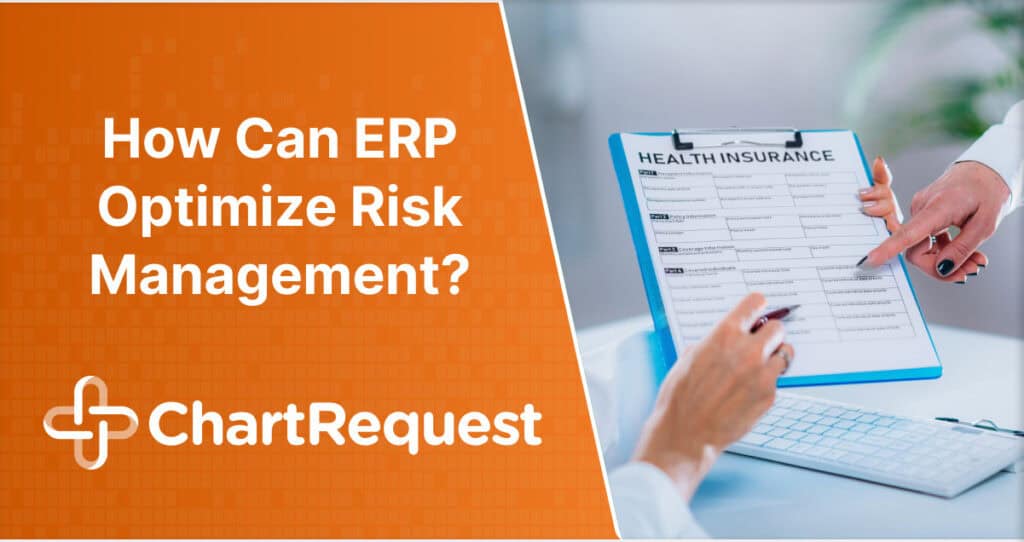Pediatric offices work hard to provide kids with the excellent care necessary to foster healthy development. While this drive often comes from a place of passion, they also need to worry about finances at the end of the day.
Unfortunately, when it comes to dealing with health records, many pediatric offices are leaving money on the table. This is where Release of Information (ROI) software can make a big difference.
With electronic ROI, the long process of handling records requests can be simpler and faster. This means pediatric offices spend less time on tedious administrative paperwork. Plus, parents like it when things are quick and easy, which can bring more families to the office.
In short, electronic ROI helps pediatric offices work smarter, not harder, making them better for both kids and the business. And when it comes to a fast and reliable ROI solution, ChartRequest is no doubt leading the race. As a modern ROI solution, ChartRequest has made strides in improving health information exchange.
In this article, let’s explore the revenue benefits pediatric offices can experience by digitizing the release of information.
The Downside of Traditional ROI in Pediatric Offices
Traditional ROI methods in pediatric offices aren’t really meeting the specific needs of kids’ health records, which can slow things down. Any ROI delays can actually hurt pediatric offices’ bottom lines.
As kids grow, their health needs change, but paper records don’t have the mobility and accessibility doctors need to track important changes. Additionally, about 25% of medication mistakes come from hard-to-read handwriting on paper.
Traditional ROI often leaves records all over the place, making things inefficient and more expensive. This mess can interrupt patient care and might even mean lost revenue.
Here’s a quick breakdown of key factors:
1. Time and mistakes: Slow, manual work can mean lost or wrong records, hurting patient care and pediatric offices’ revenue.
2. Access and costs: If you’re stuck with physical records, the overhead costs of scanning, copying, and sharing are higher and more time-consuming.
3. Rules and keeping patients happy: It’s tough to keep up with privacy laws, and old ways might not meet what patients now expect. This could hinder patient retention.
4. The Environment and Keeping Up with Tech: Old-school ROI doesn’t play well with the growing use of telehealth. Moving to digital can help you stay in step with today’s healthcare technology and boost your earnings.
5 Ways Modern ROI Can Boost Revenue for Pediatric Clinics
Moving beyond the limitations of traditional, electronic ROI presents a powerful solution.
Your pediatric clinic can overcome the challenges of manual processes by embracing digital innovation.
This enhances efficiency and accuracy in managing patient health records. Shifting to electronic ROI streamlines operations. It opens the door to improved patient care and increased revenue opportunities.
1. Optimizing Billing Processes with Electronic ROI
Optimizing billing processes with electronic ROI transforms how pediatric offices manage finances.
Firstly, electronic ROI cuts down errors in billing by facilitating accurate patient information. This means fewer mistakes when noting down demographics and compiling medical history.
It’s like having all the right pieces of a puzzle. It’s easier to complete the billing picture accurately and quickly.
Second, timely access to medical records is another plus. This quick turnaround means bills are sent sooner, reducing delays in payments. With their specific requirements, insurance companies get exactly what they need, decreasing the chances of claim denials, which were as high as 17% in 2021.
There is also the advantage of staying on top of legal requirements like HIPAA compliance. This careful handling of sensitive information avoids legal headaches and keeps billing smooth. Staying faithful to HIPAA rules can also reduce the risk of getting disincentivized.
The impact on patient satisfaction can’t be overstated.
When bills are accurate, patients trust the office more, boosting the clinic’s reputation and its financial health.
Finally, blending ROI with tech like EHR means fewer errors and faster billing cycles. With undercoding leading to an average of $18,000 in lost revenue per quarter, it’s clear how vital accurate documentation is.
Electronic ROI helps pediatric offices to thrive financially.
2. Marketing Advantages of Electronic ROI
Electronic ROI strengthens an office’s online reputation.
According to Pew Research, almost 97% of Americans own a smartphone, and over 85% use the internet. Part of that demographic is parents who are very involved with their child’s care, and they’re more likely to read other parents’ reviews of healthcare experience.
Reviews and ratings heavily influence a healthcare office’s image. Research shows that 84% of patients use online reviews to judge doctors, with 77% using them as a first step in finding a new doctor.
With electronic ROI, pediatric offices can make their processes faster, reduce mistakes, and boost patient happiness, which leads to better reviews.
Also, electronic ROI can help a pediatric office grow its patient base. With more efficient and accurate health record handling, pediatric offices can attract new parents seeking the best care for their kids.
A survey shows that 80% of healthcare consumers prefer a provider who lets them access all their healthcare info in one place.
3. Reducing No-Show Rates Through Efficient Record Management
Reducing no-show rates becomes increasingly achievable with the help of electronic ROI. It improves appointment scheduling and follow-ups with comprehensive record keeping.
Easier access to medical records minimizes the chances of double-booking or overlapping appointments. This helps reduce patient frustration and potential no-shows.
Another aspect to consider is that efficient scheduling and management of appointments can lead to shorter waiting times for patients.
According to Software Advice, 42% of patients who missed their appointments did so due to long wait times with their record retrieval.
This goes to show how electronic ROI can directly contribute to reducing no-show rates by improving patient satisfaction.
4. Leveraging Data for Strategic Decision Making
Electronic ROI equips pediatric clinics with a wealth of data, paving the way for informed decision-making. It presents a goldmine of actionable insights that can be harnessed to optimize both resource allocation and service delivery.
For example, by analyzing the data from electronic records in bulk, clinics can identify patterns such as the frequency of illnesses or peak consultation times. This can guide the allocation of resources like staff scheduling or supply procurement, ensuring that the clinic is fully prepared during busy periods or for common ailments.
According to a study, data-guided resource allocation leads to an average of 15% cost reduction for healthcare facilities.
The data collated can also reveal valuable insights about patient behavior. Clinics can pinpoint which services are frequently utilized and which are not. This knowledge can be instrumental in tailoring services to better meet patient needs, leading to improved patient satisfaction and retention rates.
Moreover, it can identify potential areas for growth, such as services that could be added or expanded upon. The American Medical Association reports that clinics using data-driven service optimization saw a 10-15% increase in service utilization.
5. Enhancing Collaboration and Referrals
Modern ROI allows for easy sharing of patient data among healthcare providers.
It helps ensure care coordination during patient referrals or when multiple providers are involved in treatment. With an electronic ROI system, a pediatrician can quickly send a child’s health records and test results to a specialist.
This data gives the specialist a clear understanding of the patient’s health. It leads to accurate diagnoses and effective plans for treatment.
In addition, these systems make the referral process more efficient. They allow healthcare providers to track a patient’s care journey digitally and avoid any gaps in their treatment. This improves patient outcomes and strengthens the relationship among healthcare providers.
Also, ROI systems build transparency and trust between patients, doctors, and insurance providers.
Secure platforms let everyone access necessary information.
This promotes shared responsibility in patient care and improves the overall healthcare experience. As a result, patient satisfaction increases, and trust in the healthcare system grows.
ChartRequest: The Ultimate Electronic ROI Solution for Pediatric Offices
ChartRequest, a leading provider of electronic ROI services in the healthcare industry, is the ultimate solution for pediatric offices seeking to digitize their ROI process.
The platform is specifically designed to digitize and streamline the way medical practices handle health record requests, ultimately improving productivity and turnaround times.
- Streamlined Request Management One of ChartRequest’s key features is its streamlined request management. The comprehensive digital platform drastically reduces the administrative burden by making managing and tracking health record requests easy. This significantly increases productivity, allowing physicians and staff to focus more on patient care.
- Automated Billing and Collections This ensures prompt payment for services rendered, eliminating revenue loss caused by delayed payments, which is crucial for the financial health of pediatric offices.
- Audit Trail With ChartRequest, pediatric offices can maintain a complete audit trail of health record requests. This is pivotal in enhancing compliance, reducing the risk of fines and penalties, and ensuring the office adheres to healthcare regulations.
- HIPAA Compliance and Data Security A high level of security and compliance is another crucial feature provided by ChartRequest. This ensures the protection of sensitive patient data. It reduces the risk of data breaches and associated costs, which could be detrimental to a pediatric office’s reputation and financial stability.
- Electronic Delivery of Health Records not only reduces mailing costs, but also speeds up the overall process. Provider and requester notifications are also part of ChartRequest’s service, providing real-time updates to both parties, enhancing communication, and minimizing delays.
- Supports Electronic Signatures This speeds up the approval process. It eliminates the need for traditional signing methods, enhancing the ROI process’s efficiency.
Each of these features contributes to making processes more efficient, reducing costs, enhancing compliance, and ultimately increasing the revenue of pediatric offices.
Implementing Electronic ROI in Your Pediatric Office
Sure, here’s a more straightforward version:
1. Start with Learning: First, get to know how the electronic ROI platform works. If you’re using ChartRequest, we offer one-on-one training sessions to help you understand everything from handling records to managing referrals.
2. Plan Your Training: Decide if you’ll train your team one by one or all together. This depends on how many people you have and how busy they are.
3. Key Features to Focus On: Teach your staff how to handle medical record requests, share health information, and coordinate with other doctors.
4. Tackle Challenges Head-On: Your team might face some challenges while learning how to use a better release of information solution. Be ready with extra help for those who need it and keep open lines for questions.
5. Practice Makes Perfect: Encourage your team to use the new system often and give them a chance to share their thoughts and questions. This will help them get better at it over time.
By understanding and implementing these steps, your pediatric office can effectively integrate electronic ROI, enhancing efficiency, compliance, and revenue.
Boost Your Revenue with ChartRequest Today!
Shifting to electronic ROI brings several benefits to pediatric offices that impact revenue. These improvements bolster both the efficiency of healthcare delivery and significantly boost revenue.
Adopting a modern ROI system like ChartRequest will help pediatric practices better navigate the challenges of healthcare management while ensuring better patient care and financial health.
If you’re looking to take your pediatric office to the next level, consider exploring ChartRequest’s ROI solutions. We are number one not just on paper. We retrieve all types of medical records as fast as one day, and with a 5-day guarantee
Don’t miss out on the opportunity to revolutionize your practice – book a demo today and see the difference it can make.








